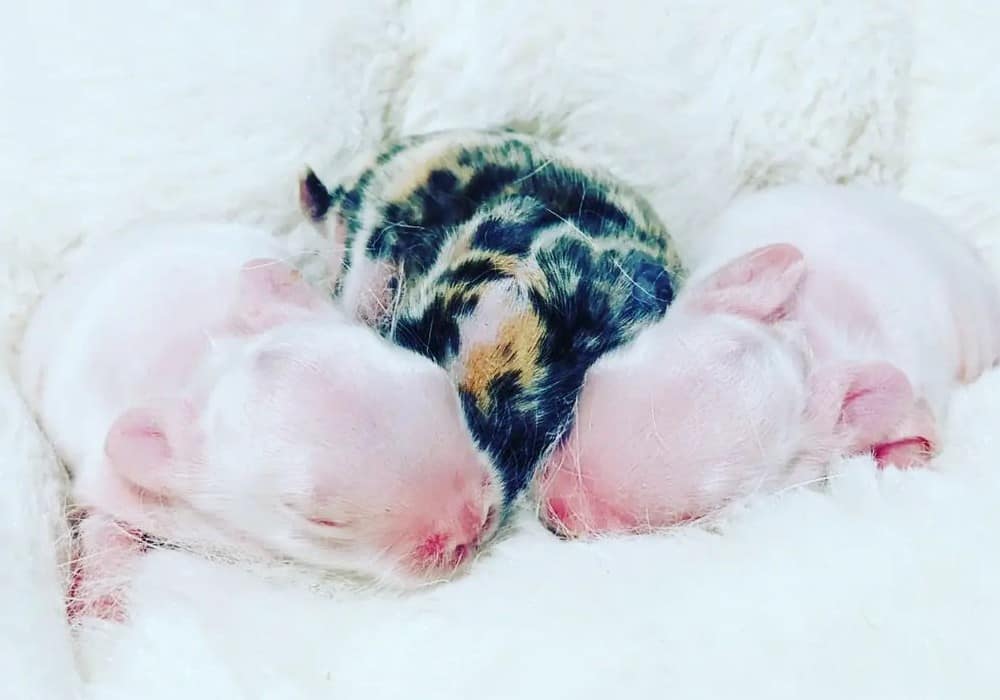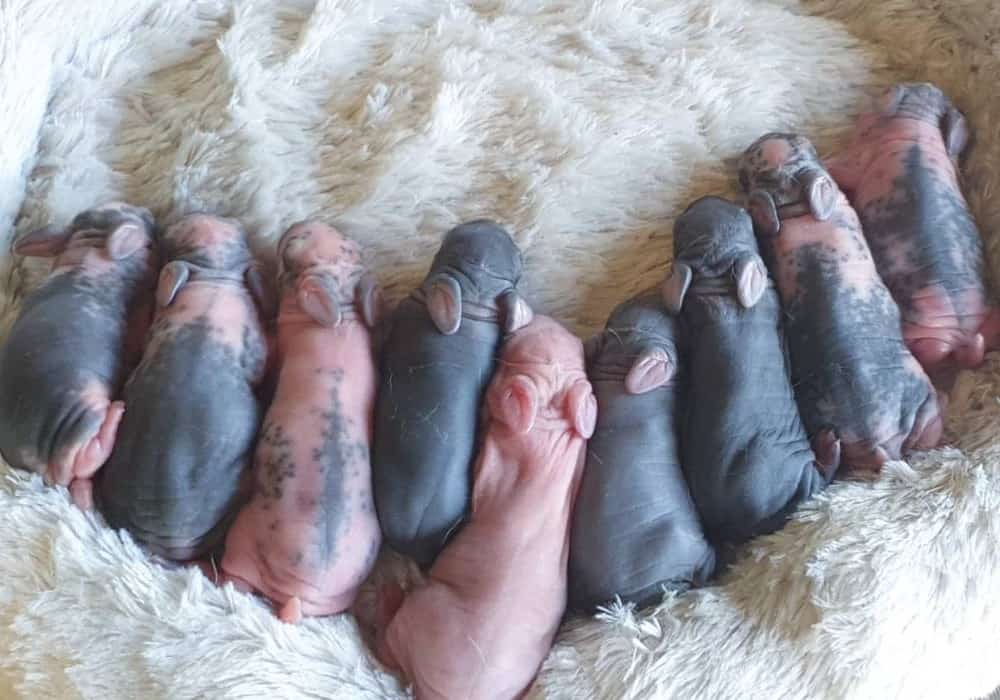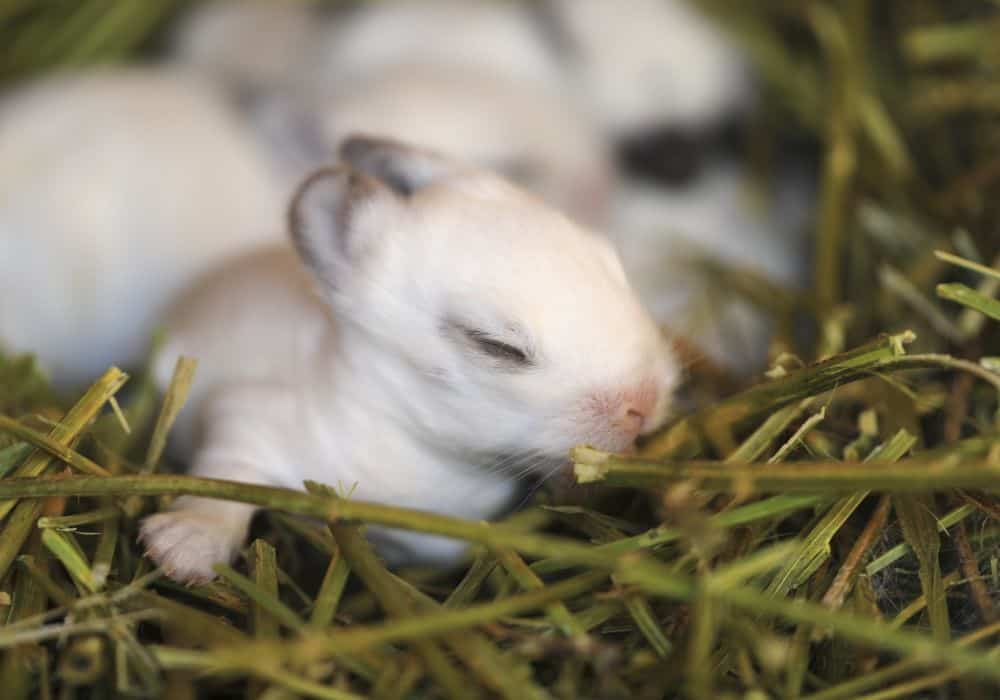A newborn rabbit is a delicate creature that needs to be handled with care. When it comes to feeding, you need to be extra careful as their stomach is very sensitive. Are you interested in the answer to the question “what and how to feed a newborn rabbit?” Let’s find out!
House Rabbits
As a first-time pet rabbit owner, you may be wondering what to expect from your new arrival. This guide will help you care for your newborn pet rabbit and ensure a happy and healthy life for your bunny.
How to Hand Feed a Newborn Rabbit
If you have a newborn pet rabbit, you will need to feed it milk. You can do this by using a syringe without a needle, or a small bottle.
To start, warm up some milk to body temperature. You can do this by heating it in the microwave for a few seconds, or by using a stovetop. Once the milk is warm, fill up the syringe or bottle.
If you are using a syringe, insert it into the side of the rabbit’s mouth. If you are using a bottle, place the nipple into the rabbit’s mouth. Gently squeeze the milk into the rabbit’s mouth, being careful not to force it.
The rabbit will likely drink the milk slowly at first. Once it gets used to the process, it will start drinking faster. Once the rabbit is done drinking, remove the syringe or bottle.
So, how often to feed a newborn rabbit? You should feed your newborn pet rabbit milk 2-3 times a day.
- It is best to start with a milk replacer made specifically for rabbits. You can find these at most pet stores.
- After each feeding, offer your rabbit a small amount of hay to help with their digestion.
- As your rabbit gets older, you can start to introduce them to solid foods. Start with small amounts of fresh vegetables and fruits.
- Always offer fresh water to your rabbit.
How to Keep a Newborn Rabbit
A baby rabbit needs special care to ensure it remains healthy and happy. The following tips will help you keep your newborn rabbit healthy and safe.
- Provide a clean, comfortable cage. The cage should be large enough for the rabbit to move around and stretch its body. It should also have a solid floor so the rabbit’s feet do not get sore.
- Line the cage with soft, absorbent bedding. This will help keep the rabbit clean and dry.
- Give the rabbit fresh hay to eat. Hay is an important part of a rabbit’s diet and helps keep their digestive system healthy.
- Provide fresh water at all times. A water bottle with a sipper tube is the best way to give your rabbit water.
- Handle the rabbit gently. Baby rabbits are delicate and can be easily injured.
- Take the rabbit to the vet for a check-up and to get vaccinations. This will help keep your rabbit healthy and protect it from diseases.
How to Care for Baby Bunnies
Here are a few things to keep in mind when caring for your newborn rabbits:
- Keep them clean and dry.
Newborn rabbits are very delicate and need to be kept clean and dry. The best way to do this is to use a soft, clean cloth and warm water. Gently wipe their bottom and genitals area after every feeding. - Keep them warm.
Newborn rabbits are unable to regulate their own body temperature, so it’s important to keep them warm. A good way to do this is to place them in a covered box or basket with a hot water bottle. - Feed them often.
Newborn rabbits need to eat every 2-3 hours, so be prepared to feed them often. They will only need a small amount of food each time, so don’t overdo it. A good way to start is by offering them a teaspoon of milk replacer per 4 ounces of body weight. - Handle them gently.
Since newborn rabbits are so delicate, it’s important to handle them gently. Avoid picking them up by their ears and never hold them by their tails. - Keep an eye on their health.
Newborn rabbits are susceptible to health problems, so it’s important to keep an eye on them. Look for signs of diarrhea, vomiting, or difficulty breathing. If you notice any of these things, take them to the vet immediately.
Wild Rabbits
Newborn wild rabbits are among the cutest and most vulnerable animals in the world. They are born blind and deaf, and their mother will only nurse them for a few minutes each day. The rest of the time, they are on their own.
The first few weeks of a wild rabbit’s life are spent in a nest, where they are protected from the elements and predators. As they grow older, they will start to venture out of the nest to explore their surroundings. So, how to care for newborn wild baby bunnies? Read below.
How Do You Know if Wild Rabbits Need Help?
If you find a nest of wild rabbits, it is best to leave them undisturbed. The mother rabbit will take care of her young and will only move them if she feels they are in danger. However, there are a few signs that can indicate if the mother rabbit is no longer able to care for her young and they will need your help.
The first thing to look for is if the nest has been disturbed or moved. This can be a sign that the mother rabbit has been killed or has abandoned her young. If the nest is undisturbed, check to see if the mother rabbit is still coming to feed her young. If you see the mother rabbit coming and going from the nest, she is still taking care of her young and you do not need to intervene.
If, however, you do not see the mother rabbit coming to the nest, the newborn rabbits may be in danger and will need your help. You can try to place the nest back in its original location, but if the mother rabbit does not return, the rabbits will need to be cared for by humans.
If you take in wild rabbits, it is important to find a licensed wildlife rehabilitator who can care for them properly. Do not try to care for them yourself, as they have specific needs that you will not be able to meet.
How to Feed a Newborn Wild Rabbit
Assuming you have a wild rabbit that you have found and want to take care of, here are some tips on how to feed it.
First, you will need to find a baby bottle and nipple that is small enough for the rabbit. The nipple should have a hole that is small enough that the rabbit will not be able to suck too much milk at a time.
Next, you will need to find a milk replacer for rabbits. You can find this at most pet stores. Once you have the milk replacer, mix it according to the package directions.
Now that you have the milk replacer mixed, it is time to feed the rabbit. Gently hold the rabbit in one hand and the bottle in the other. Put the nipple into the rabbit’s mouth and slowly start to squeeze the bottle so that the milk will start to flow. The rabbit will probably start to suck on the nipple and you can let go of the bottle. Let the rabbit eat until it is full.
When the rabbit is around 4-6 weeks old, you can start to slowly introduce solid food into its diet. hay, pellets, and vegetables are all good options for solid food. Start with a small amount of solid food and gradually increase the amount as the rabbit gets older.
[amazon box=”B09LVDRX1K” template=”horizontal” tracking_id=”a.gen.bunny-20″]How Often to Feed a Newborn Rabbit
It is recommended to feed a newborn wild rabbit every two hours for the first day, then every four hours for the next two days, then every six hours until they are weaned.
How to Keep a Newborn Rabbit
There is a lot of information available on how to keep a newborn rabbit, as well as on how to care for a rabbit in general. It is important to make sure that the rabbit has a comfortable place to sleep, such as a box or basket lined with soft material.
The rabbit should also have a place to eat and drink, such as a bowl or jar. The food and water should be changed regularly to prevent the rabbit from becoming ill. The rabbit’s hutch should be cleaned regularly and lined with straw or hay to keep the rabbit warm.
How to Care for Wild Baby Bunnies
If you find a wild baby rabbit, the best thing to do is to leave it alone and observe from a distance. Mother rabbits will usually come back to their young if they are left undisturbed. If the mother rabbit does not return, or if the baby rabbit is injured, you will need to take it to a wildlife rehabilitator.
If you are going to care for the baby rabbit yourself, you will need to provide a warm, safe place for it to live. And follow our advice.
It is important to keep the baby rabbit warm, hydrated, and safe.

What Diseases Newborn Wild Rabbits Can Have
Newborn wild rabbits can have a variety of diseases, including:
- Ear mites: These tiny parasites can cause severe inflammation and infection of the ears.
- Pasteurella: This bacteria can cause a variety of diseases, including pneumonia, meningitis, and septicemia.
- Myxomatosis: This virus is highly contagious and causes severe swelling and lesions on the skin. It is often fatal.
- Calicivirus: This virus can cause severe respiratory illness and is also highly contagious. It is often fatal.
- Sore hocks: This condition is caused by poor circulation and/or wet, dirty living conditions. It results in painful sores on the rabbit’s feet.
- Fly strike: This is a serious and often fatal condition caused by flies laying their eggs on the rabbit’s skin. The eggs hatch into maggots which eat the rabbit’s flesh.
At What Age Rabbits Can Be Released
When it comes to releasing wild rabbits into the wild, there is no definitive answer. The age at which a wild rabbit can be released into the wild depends on a number of factors, including the species of rabbit, the climate in which they will be released, and the availability of food and shelter.
In general, however, it is recommended that wild rabbits be released into the wild when they are at least six months old. This is because, at six months old, wild rabbits are typically large enough to fend for themselves and are less likely to fall prey to predators. Additionally, releasing wild rabbits at this age gives them the best chance of successfully establishing a territory and reproducing.
If you are considering releasing a wild rabbit into the wild, be sure to do your research to ensure that the rabbit will be able to thrive in its new environment.

How Do You Make Sure That Wild Rabbits Are Not Orphaned?
It’s every new parent’s worst nightmare: Leaving their child behind. But for one species of mammal, this is a very real possibility.
Rabbits are known for being very maternal animals. They take great care of their young and spend a lot of time with them. However, there is one thing that can cause a mother rabbit to abandon her young: Disappearing food.
If the food supply in the area where the rabbits live disappears, the mother will often leave her young behind in search of food. This can be very dangerous for the young rabbits, as they may not be able to survive on their own.
There are a few things you can do to make sure the mother rabbit doesn’t leave her children behind:
- Make sure there is always a food supply available for the rabbits.
- If the food supply starts to disappear, provide the rabbits with food that is easy to find and eat, such as hay or fresh vegetables.
- Place the food in an area where the mother rabbit can see it.
FAQ
How do you hand feed a baby rabbit?
When hand feeding a baby rabbit, you will need to hold the rabbit in your lap with its head facing towards you. Use a small spoon or syringe to slowly feed the rabbit its food.
How to care for baby bunnies Just born?
If you have found a nest of baby bunnies, it is best to leave them alone. The mother will take care of them. If you handle them, you may scare the mother away and she will not come back.
What are the signs that my newborn rabbit is not getting enough food?
If your rabbit is not eating enough, you will notice that it will have a poor body condition. It may also be lethargic and have a decreased activity level.
Conclusion
In this article, you learned the answer to the question “how to care for baby bunnies after they are born”. Overall, a baby rabbit should be fed its mother’s milk for at least the first four weeks of life. If the mother is not available, you can use a commercial milk replacer designed for kittens. Kitten milk replacers can be found at pet stores or online.
Also read:
- Discover the Amazing World of 10 Day Old Bunnies: All About Rabbits!
- Discover All About the Characteristics of a 1 Year Old Rabbit
- Why Doesn’t My Rabbit Like Me? – Understanding Rabbit Behavior for All About Rabbits
- Everything You Need to Know About Bunny Grinding Teeth in Rabbits
- How Eating Poop is Part of a Normal Rabbit Diet – All About Rabbits
References
- Vegetables and fruits | Best Friends Animal Society – https://resources.bestfriends.org/article/rabbit-diet-what-feed-bunny
- Vaccinations | PetMD – https://www.petmd.com/rabbit/rabbit-vaccines-everything-you-need-know
- Diarrhea | House Rabbit Society – https://rabbit.org/intermittent-soft-cecotropes-in-rabbits/#:~:text=True%20diarrhea%20in%20a%20rabbit,as%20Clostridium%20spp.%20or%20E.
